In the Dark Read online
IN THE DARK
E. Nesbit
Edited, with an Introduction, by
HUGH LAMB
Copyright
HarperCollinsPublishers
1 London Bridge Street
London SE1 9GF
www.harpercollins.co.uk
First published in Great Britain by Equation 1988
Selection, Introduction, and Notes © Hugh Lamb 2017
Cover design by Mike Topping © HarperCollinsPublishers Ltd 2017
Cover images © Shutterstock.com
A catalogue copy of this book is available from the British Library.
This novel is entirely a work of fiction. The names, characters and incidents portrayed in it are the work of the author’s imagination. Any resemblance to actual persons, living or dead, events or localities is entirely coincidental.
All rights reserved under International and Pan-American Copyright Conventions. By payment of the required fees, you have been granted the non-exclusive, non-transferable right to access and read the text of this e-book on screen. No part of this text may be reproduced, transmitted, down-loaded, decompiled, reverse engineered, or stored in or introduced into any information storage and retrieval system, in any form or by any means, whether electronic or mechanical, now known or hereinafter invented, without the express written permission of HarperCollins.
Source ISBN: 9780008249014
Ebook Edition © September 2017 ISBN: 9780008249021
Version: 2017-08-10
Dedication
To the beautiful Marisol – my partner and guardian angel.
Table of Contents
Cover
Title Page
Copyright
Dedication
Introduction
Man-Size in Marble
Uncle Abraham’s Romance
From the Dead
The Haunted Inheritance
The Three Drugs
The Letter in Brown Ink
The Violet Car
John Charrington’s Wedding
No. 17
The Pavilion
The House of Silence
The Mystery of the Semi-Detached
In the Dark
The Head
The Ebony Frame
Hurst of Hurstcote
The Five Senses
The Haunted House
The Shadow
The Detective
The Power of Darkness
Bibliography
Acknowledgements
About the Publisher
INTRODUCTION
There can be few children over the past hundred years who have never encountered the works of E. Nesbit. Even nowadays, in spite of the distractions of playstations and the Internet, her children’s stories entertain and enchant young readers. Lionel Jeffries’s 1972 film of The Railway Children (1906) is a perennial television favourite.
At the same time, it is almost certain that very few adult readers know of, or have read, E. Nesbit’s tales of terror. Apart from one often-reprinted story, they have been largely neglected in the various revivals of supernatural fiction over the years. This is a shame, for not only are they intrinsically interesting, but they pre-date her famous children’s books and represent their author’s growing literary accomplishment and skill, developed very quickly in the hothouse of economic necessity.
You will note I wrote ‘her children’s books’. This is to clear up a misunderstanding, which still persists, regarding the gender of E. Nesbit. Because she published everything under the cloak of that terse initial, Edith Nesbit was often thought to be a man (something she was quite happy to encourage, by all accounts). H.G. Wells was convinced she was male – to the extent of conjuring up suitable ‘E’ male names – until he met her. As late as 1931 (seven years after her death), the noted editor Montague Summers mistakenly called her ‘Evelyn Nesbit’ in his Supernatural Omnibus, a mistake repeated five years later by the anonymous editor of the famous Century of Ghost Stories.
Edith Nesbit was born on 15 August 1858, in Kennington, the youngest of the six children of John Collis Nesbit, a teacher and scientist who ran an agricultural college. She was educated in England and on the Continent and is reported to have lived in at least two haunted houses as a child: excellent grounding for what was to follow. Her childhood also brought her several life-long fears and phobias which were to find expression in her stories, as will be discussed later.
Her father died when Edith was only three years old, and declining fortunes brought the Nesbits back to London in the 1870s. She had already started writing poetry and met with some success while still in her teens. The magazines Good Words and Sunday Magazine bought some of her poetry in 1876, and she became a frequent contributor of poetry to various journals from then on.
In 1877 she met her future husband, Hubert Bland, three years her senior, and, it seems, quite a character: tall, dark, and handsome, with military bearing, and sporting a monocle (which was for more than show – his eyesight was very poor), he was just the type to sweep Edith the literary daydreamer off her feet. And sweep her off her feet he did – straight on to her back. Hubert Bland, as Doris Langley Moore puts it, ‘could not by any effort of nature leave women alone’. Put less elegantly, Bland would tackle anything that moved and wore skirts; this facet of his character was to dominate their marriage.
He got Edith pregnant in short order, and they were married in April 1880, Edith being two months away from her first baby. Bland had started a small brush factory which seemed to be pottering along quietly. Then, in that same year of 1880, he contracted smallpox – twice – and during his long illness his partner in the factory absconded to Spain with the funds. The Blands were penniless and very much up against it.
Edith Nesbit was never the type to sit back and wail, however. She turned to writing flat out, and it was during this time that she started to produce short stories, some of which can be found in this volume, and poetry of a more lasting kind than she had written before. She also discovered an unusual money-maker: designing and painting Christmas cards, inscribed with her own verses. Hubert caught the writing bug as well, for they collaborated on a joint novel, The Prophet’s Mantle, published in 1885 (it was a failure). Edith and Hubert did, however, pursue separate – and successful – writing careers. Hubert became the editor of Today, a respected literary journal, and published new work by authors such as Shaw, Ibsen, Whitman and William Morris.
The early 1880s saw another collaboration with Hubert that became more permanent. Despite his physically domineering manner and his relish for the opposite sex, Hubert was no clod. He was well read and intellectually active, and was a keen socialist. The Victorian era and its obsession with capitalism had produced widespread dissatisfaction among liberal-minded thinkers, and Hubert belonged to several idealistic sets. Increasing divisions amongst them led to the founding, in 1884, of the Fabian Society. Hubert was a leading light in its formation, chairing the first meeting on 4 January 1884, and Edith was also actively involved. The new society’s name even affected the Blands’ first novel, The Prophet’s Mantle. It was published under the pseudonym ‘Fabian Bland’.
Edith had contributed a steady flow of stories to the many journals of the day, including Longman’s Magazine, Temple Bar, Argosy, Illustrated London News, the Sketch and the Victorian. Another magazine which published a good deal of her work was Sylvia’s Home Journal, and it was this magazine which brought about another major change in Edith’s life.
A young Yorkshire girl, Alice Hoatson, worked on Sylvia’s Home Journal as a reader and, in 1882, met Edith when she brought in a story for consideration. The two women, both in their early twenties, struck up a warm friendship, and Alice was eventually invited to move in with the Blands. This proved to b
e a disastrous move. Alice and Edith had a friendship that was to span more than thirty years but, despite this, Alice was the last person who should have been sharing a roof with the priapic Hubert Bland. She very quickly became his mistress and remained so until he died. More than that, she bore him two children, in 1886 and 1899, both chez Bland, and Edith adopted both of them.
What a household it must have been! Hubert dividing his attentions between the two of them and anyone else he could find; Alice forced in public to treat her two children as Edith’s; and Edith obliged to treat Alice’s children as her own while always aware of the circumstances of their birth. And, it seems, she didn’t let on to either of them what the real story was for a long time.
Hubert, while fond of bestowing his favours where he could, was not too happy when others tried the same game. Julia Briggs recounts an amusing incident when H.G. Wells (as bad as Bland in his own way) tried to run away with Rosamund Bland, Hubert and Edith’s daughter. Hubert cornered them at Paddington and gave Wells a piece of his mind and, ultimately, a thick ear, all on the platform. There is no greater irony in all the Blands’ history than the thought of Hubert giving Wells a few belts round the ear for the cardinal sin of seducing his daughter. A lot of Edith Nesbit’s problems might have been avoided – it is hard to think otherwise – if she had had a father to give Hubert a good thumping at some early stage in their relationship.
The Blands’ marriage never foundered, despite Hubert, and despite Edith herself indulging in some extra-marital fun (who could blame her?). They had a wide circle of famous friends, among them Rider Haggard, G.K. Chesterton, Oscar Wilde, Andrew Lang, Laurence Housman, R.H. Benson and Grant Allen – and George Bernard Shaw.
Shaw was a profound influence on Edith’s life. She developed a strong passion for him, but it would seem to have been one-sided romance. This was not the case with several other men with whom she became involved over the years, including the author Richard le Gallienne and the famous Egyptologist Dr Wallis Budge. Perhaps the balancing of Edith’s fun on the side with Bland’s adventures gave the marriage some needed stability.
Edith’s first solo book, a volume of poetry called Lays and Legends, appeared in 1886. This was moderately successful and she became more established as an author. She published her first children’s book, The Voyage of Columbus, in 1890. Her career reached a peak in 1901 and started a gradual decline thereafter (though not seriously until about 1910 onwards).
The turn of the century also brought real tragedy. The Blands’ eldest son, fifteen-year-old Fabian, died in 1900 after an operation to remove his tonsils. Edith was stricken. Darker days lay ahead. In 1910, Hubert fell ill with heart trouble and failing eyesight. He finally went blind when his one good eye failed, and in April 1914 he died of what seems to have been another, final heart attack.
Edith found herself in straitened circumstances. The war years obliged her to take paying guests at her home, Well Hall in Eltham, and she ran a poultry farm and market garden. This did not help much and, despite being awarded a Civil List pension of £60 a year for her services to literature, these must have been black times.
She never regained her literary feet, but gained some return of happiness when she married an old friend and fellow socialist, Thomas Tucker, in 1917. He persuaded her to move out of Well Hall, and they set up home at Jesson St Mary on Romney Marsh in Kent in 1922. She even published one or two more books. Life must have been hard, but Tucker was not Bland, and the marriage seems to have been a fairly happy one, despite her move to Kent coinciding with the onset of bronchial disease, which was in the end to kill her.
The last two years at Jesson St Mary were increasingly burdened by her growing incapacity. Though her mind was as active as ever, her body failed her. Letters written during this period show the strain and agony she suffered, drugged with morphia or racked with pain. Finally, on 4 May 1924, she died; it seems to have been a blessed release. She is buried in St Mary’s in the Marsh churchyard, near Dymchurch. Her gravestone (actually a wooden memorial made by Tucker himself) says simply, ‘Resting. E. Nesbit. Mrs Bland-Tucker. Poet and Author.’ I think she earned her rest.
* * *
Most writers have two or three styles but E. Nesbit experimented in about a dozen … horror stories, sentimental love stories, stories in dialect; she wrote poetry for public recitation, poetry for the nursery, Socialist propaganda poetry … work for children, birthday books, a volume on dogs, little plays …
Doris Langley Moore Edith Nesbit, 1933
Edith Nesbit as a writer of ghost and horror stories stands apart from her contemporaries. An obvious comparison would be with Mrs Molesworth, who wrote children’s books and ghost stories; but there the similarity ends. Mrs Molesworth would never have given ‘Man-Size in Marble’ its vicious ending; the hero’s wife would have been saved in the nick of time.
‘Man-Size in Marble’ is probably Edith Nesbit’s best known story, and its appeal to modern readers is not surprising. It is unremittingly savage; the hero’s wife does absolutely nothing to deserve her fate, except by being in the wrong place at the wrong time. It is instructive to imagine what her fellow female ghost story writers would have made of it; Edith Wharton, for instance, would have smothered it in language (Nesbit seems neither to have met Henry James or, if she did, take much notice of him – happily for her writing). The story’s success is all the more interesting as we see hardly anything at all other than an empty space where something should have been and a bit of a statue at the end. Mrs Molesworth would probably have given us the lot before her happy ending, shuffling marble feet and all.
Edith Nesbit had a strong dread of being buried alive, caused, it seems, by the experience of a relative who had been actually placed in his coffin before it was discovered he was still alive. ‘The Five Senses’ can only be read as an attempt to work out her own fear in literary form.
‘The Power of Darkness’ was inspired by Edith’s visit in 1905 to the Musée Grévin in Paris, a macabre waxwork show which must have put the wind up her no end. There are traces of it in ‘The Head’ as well. That story also owes a lot to her more happy pastime of building miniature towns and cities, one of which she exhibited at the 1912 Children’s Welfare Exhibition, at London’s Olympia.
We can only guess at what burrowed away in her mind to produce the strong streak of necrophilia discernible in ‘Hurst of Hurstcote’ and ‘From the Dead’. In the former, John Hurst breaks open his wife’s coffin and is found lying on the vault floor with her in his arms; while in the latter, the hero’s wife returns from the dead. Not unusual in this genre, admittedly; but consider Nesbit’s description: ‘The figure of my dead wife came in … it came straight towards the bed [note the ‘it’] … its wide eyes were open and looked at me with love unspeakable. I could have shrieked aloud.’ Hardly a happy family reunion.
Husbands and wives are not seen in the best light in her stories. The husbands are either longing for dead wives or seeing the ones they’ve got die. There seem to be few Hubert Blands in the stories; perhaps not surprising – his thrusting type, with a penchant for the occasional punch-up, is not conducive to a creepy story.
One romantic triangle, in ‘The Pavilion’, is very strangely resolved, by an unusual relic of the sixteenth century. First published late in her career, Edith Nesbit seems, in this tale, to be striking off in a new direction. It certainly stands out from the rest.
Two stories – ‘The Five Senses’ and ‘The Three Drugs’ – bear the hallmarks of a rudimentary attempt at science fiction. The wonder potion story was in vogue in the 1890s, after Stevenson’s Dr Jekyll and Mr Hyde. In both cases, Nesbit brings in her own phobias, more so than other writers on the theme.
There are traces in most of the stories of what seems to have been her dominant phobia – the dead returning to life. In 1896, Edith wrote about a childhood visit to see the mummified corpses in the church of Saint Michel, Bordeaux. They made a deep impression:
A small vault, as
my memory serves me, about 15 feet square … round three sides of the room ran a railing, and behind it – standing against the wall with a ghastly look of life in death – were about 200 skeletons, hung on wires … skeletons with the flesh hardened on their bones, with their long dry hair hanging on each side of their brown faces, where the skin in drying had drawn itself back from their gleaming teeth and empty eye-sockets. Skeletons draped in mouldering shreds of shrouds and grave-clothes, their lean figures still clothed with dry skin, seemed to reach out towards me … I was paralysed with horror … not daring to turn my head lest one of those charnel-house faces should peep out at me.
These charming exhibits (who on earth thought them suitable for children’s entertainment?) were ‘the crowning horror of my childish life,’ she wrote. ‘It is to them, I think, more than to any other thing that I owe nights and nights of anguish and horror, long years of bitterest fear and dread … my children, I resolved, should never know such fear. And to guard them from it I must banish it from my own soul.’
It is all too easy to see works of fiction as standing for something significant to the author’s life. Too often, I suspect, works written with an eye to making a few pounds quickly are invested by critics with a significance far beyond their author’s intentions. Edith Nesbit’s stories were written with money in mind, no doubt about it. But I think there may have been enough of the author in them to make them doubly interesting. You can see Edith Nesbit scribbling away, trying to push back the sight of the Bordeaux mummies creeping up behind her chair or standing in the corner, watching her with dried-up eyes. Or thrusting away the vision of being alive in her coffin, sensitive to all around her but unable to attract any attention to her plight. Or even trying to exorcise the demon of Hubert Bland rampant, impregnating anything he could get his hands on, even under their own roof.

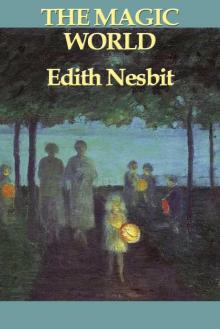 The Magic World
The Magic World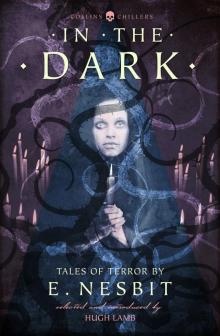 In the Dark
In the Dark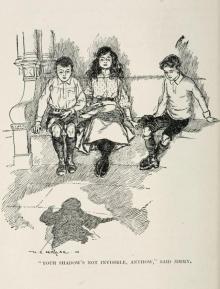 The Enchanted Castle
The Enchanted Castle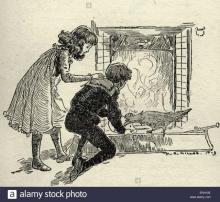 The Phoenix and the Carpet
The Phoenix and the Carpet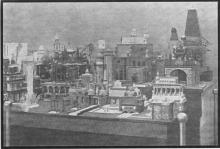 The Magic City
The Magic City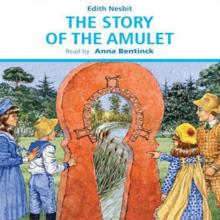 The Story of the Amulet
The Story of the Amulet The Wouldbegoods: Being the Further Adventures of the Treasure Seekers
The Wouldbegoods: Being the Further Adventures of the Treasure Seekers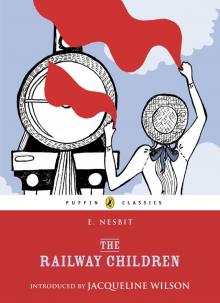 The Railway Children
The Railway Children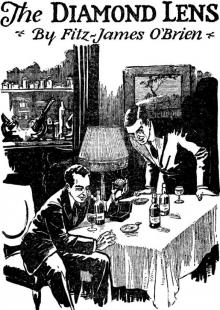 The Diamond Lens
The Diamond Lens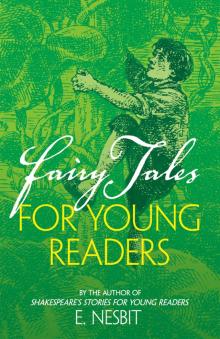 Fairy Tales for Young Readers
Fairy Tales for Young Readers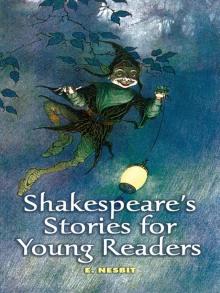 Shakespeare's Stories for Young Readers (Dover Children's Classics)
Shakespeare's Stories for Young Readers (Dover Children's Classics)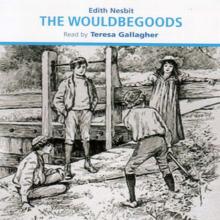 The Wouldbegoods
The Wouldbegoods The Incredible Honeymoon
The Incredible Honeymoon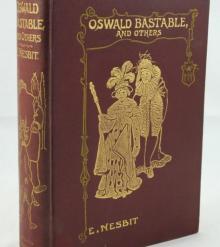 Oswald Bastable and Others
Oswald Bastable and Others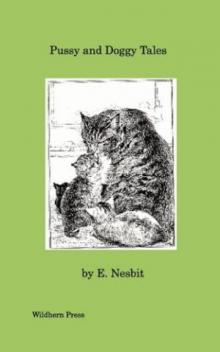 Pussy and Doggy Tales
Pussy and Doggy Tales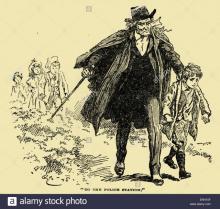 New Treasure Seekers; Or, The Bastable Children in Search of a Fortune
New Treasure Seekers; Or, The Bastable Children in Search of a Fortune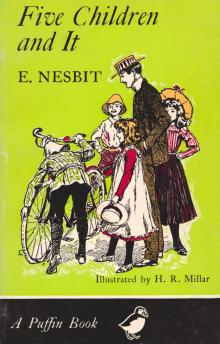 Five Children and It
Five Children and It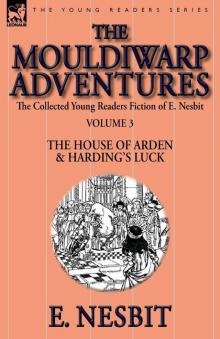 Harding's luck
Harding's luck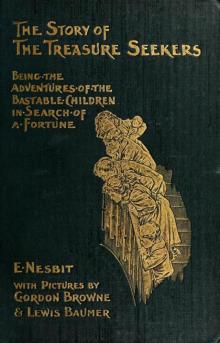 The Story of the Treasure Seekers
The Story of the Treasure Seekers The E. Nesbit Megapack: 26 Classic Novels and Stories
The E. Nesbit Megapack: 26 Classic Novels and Stories Shakespeare's Stories for Young Readers
Shakespeare's Stories for Young Readers